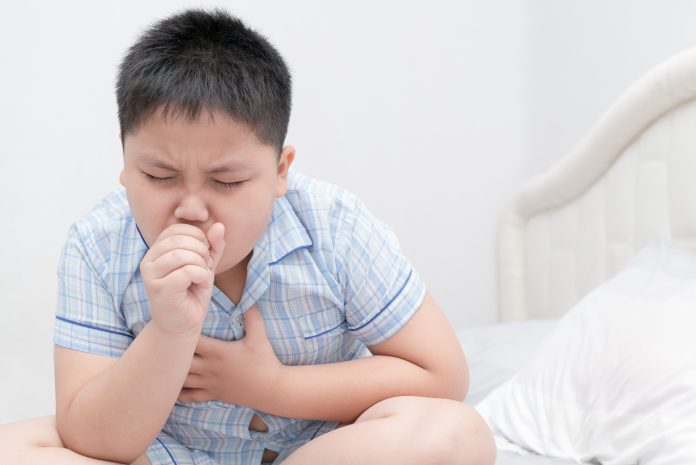
ETS: Sleep Disordered Breathing & Severe Asthma Webinar
The successful webinar ‘ETS: Sleep Disordered Breathing & Severe Asthma’, supported by GSK, was fruitful with the presence of experts and 200 attendees from 14 countries. The webinar was conducted in a very organized and effective manner and the attendees found it very informative and useful.
Webinar Chairman Dr. Mohammed Al Houqani, Associate Professor at UAE University and Consultant of Respiratory & Sleep Medicine, Sleep Disorder Specialized Clinic, UAE, has delivered the introduction speech and invited all the speakers and attendees to the sessions. The panel of speakers includes Dr. Rizwana Popatia, Consultant Pediatric Pulmonology & Sleep Medicine King’s College Hospital London, UAE, Dr. Deepa Grandon, Clinical Assistant Professor of Medicine at Case Western Reserve University, Cleveland Ohio and Consultant of Adult and Pediatric Asthma, Allergy and Immunology at Cleveland Clinic Abu Dhabi, UAE, and Prof. Emilio Pizzichini, Professor of Respiratory Medicine & Head of the Asthma and Airway Inflammation Centre, Universidad Federal de Santa Catarina, Brazil.
Dr. Rizwana Popatia has discussed the topic of Non-invasive ventilation (NIV) for neuromuscular disease in Pediatrics. Neuromuscular diseases are diverse groups of acquired or inherited conditions involving the nerves, muscles, or their connections. She explained the respiratory and sleep manifestations of the disease and said that the disorders can share common features such as chest wall and lung underdevelopment, impaired cough, lung infections, hypoventilation with sleep, swallowing dysfunction, hypotonia, and cardiomyopathy. Dr. Rizwana has well explained all those disorders with the data and put forwarded respiratory care tips and recommendations.
Dr. Deepa Grandon has focused on severe asthma characterization and started by sharing details of the prevalence of Asthma by region. Of the 9.6 million people in the UAE, 470,400 live with asthma, of which 16,000 struggle with severe asthma, according to the U.S. Severe Asthma Research Program. She differentiated the characteristics of uncontrolled asthma, difficult-to-treat asthma, and severe asthma. With the factors of poor symptom control, frequent severe exacerbations history of serious exacerbation, and airflow limitation, she explained severe asthma in detail. According to her findings, Aspirin-Exacerbated Respiratory Disease (AERD) is a good example of the complex overlap between various phenotypes, 50% of AERD patients can have eosinophilia, but not all eosinophilic asthmatics have AERD as 30% to 70% are atopic. Phenotyping patients based on various presentations and clinical characteristics help differentiate subgroups, but significant overlap exists among them. Identifying biomarkers along with clinical criteria will improve the selection of therapies and assist in individualized treatment plans.
Prof. Emilio Pizzichini’s extensive experience was evidenced in his session about Predictive Biomarkers in Severe Asthma. He explained what the relevant phenotypes are in real life and how to identify them and focused on eosinophilic phenotype. A phenotype is any observable characteristic that results from the genetic background as well as the influence of environmental factors and possible interactions between the two, whereas biomarkers are measurements of any molecule or material that reflects the disease process. The session evaluated the efficacy, safety and pharmacodynamics of three doses of mepolizumab versus placebo in patients with severe refractory eosinophilic asthma and discussed the use of Anti-interleukin-5 therapy inhomogeneous patients with prednisone-dependent eosinophilic asthma. According to Prof. Emilio Pizzichini’s, blood eosinophil count of 150 cells/µL or above, in patients with severe asthma on high-dose combination therapy is predictive of a significant exacerbation reduction with mepolizumab. When patients are identified in this way they also receive significant benefits to their HRQoL, FEV and asthma control. Blood eosinophil measurement is cheap,
widely available and easy to interpret.
After the interactive question and answers session, Conference Chairman Dr. Mohammed Al Houqani has expressed his appreciation and sincere gratitude to the members for facilitating the webinar with so many participants.
You actually make it appear really easy with your presentation however I find this matter to be actually one thing which I feel I’d never understand. It sort of feels too complex and very broad for me. I’m having a look forward to your next submit, I will try to get the hold of it!